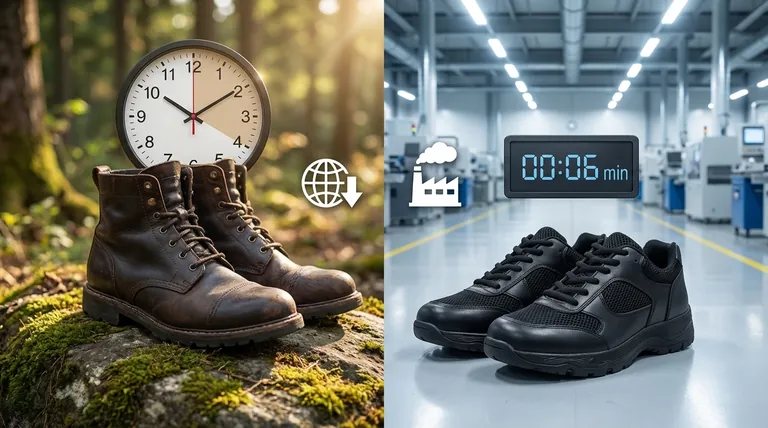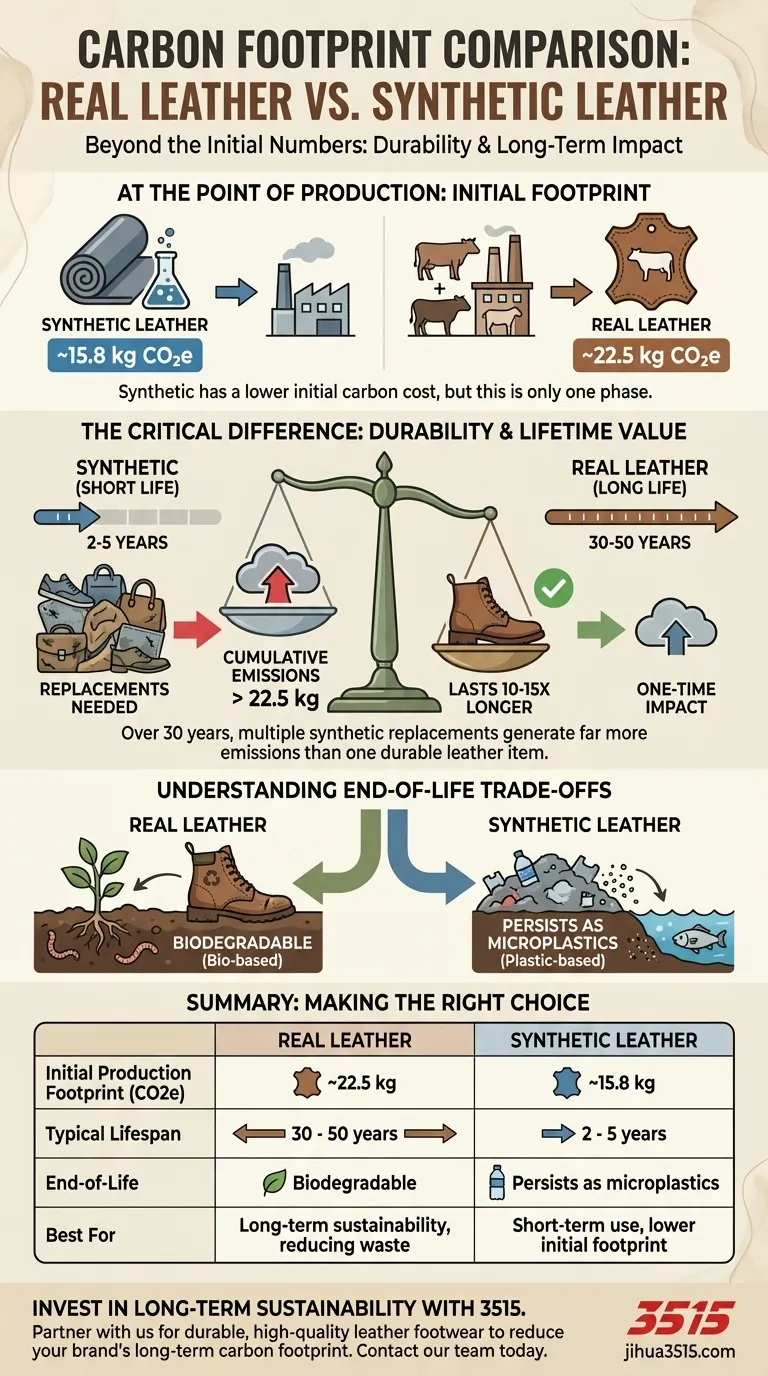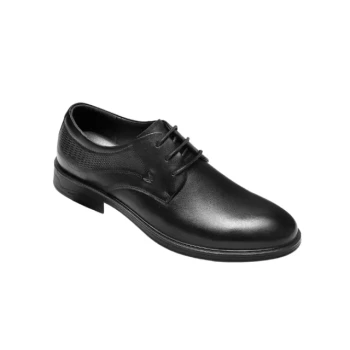At the point of production, synthetic leather has a lower carbon footprint than genuine leather. A typical synthetic leather product emits approximately 15.8 kg of CO2 equivalent (CO2e), compared to 22.5 kg CO2e for a real leather product. However, this initial number does not tell the full story of sustainability.
The crucial difference lies in durability. Because real leather lasts 10 to 15 times longer than its synthetic counterparts, it often proves to be the more sustainable choice over the long term, avoiding the repeated carbon emissions and waste from manufacturing multiple replacement items.

The Initial Carbon Footprint: A Snapshot in Time
To understand the full picture, we must first look at the emissions generated during the creation of each material. This is the figure most often cited, but it represents only one phase of the product's life.
Synthetic Leather's Production Advantage
Synthetic leather products have a lower initial carbon cost, emitting around 15.8 kg of CO2e during manufacturing. This is largely because their production is based on established plastic and polymer manufacturing processes.
Real Leather's Production Impact
Real leather has a higher upfront footprint, generating approximately 22.5 kg of CO2e. This figure is tied to the entire lifecycle of the source material, including the significant environmental impact of the livestock industry and the energy-intensive tanning processes required to transform animal hide into a durable material.
The Critical Factor: Durability and Lifetime Value
A product's true environmental impact is not just its creation cost, but its total cost over its entire usable life. This is where the two materials diverge dramatically.
The Short Life of Synthetics
Synthetic leather products have a very limited lifespan, typically lasting only 2 to 5 years before they begin to crack, peel, and require replacement.
The Longevity of Real Leather
In sharp contrast, a well-cared-for real leather product can last for 30 to 50 years. This exceptional durability is the material's single greatest sustainability advantage.
Calculating Lifetime Impact
When you factor in replacements, the carbon math shifts entirely. To cover a 30-year period, you might need to purchase between 6 and 15 synthetic items. The cumulative production emissions for those replacements would far exceed the single 22.5 kg footprint of one durable leather item.
Understanding End-of-Life Trade-offs
What happens to a product after you are done with it is a critical, yet often overlooked, part of its environmental footprint.
The Biodegradability of Real Leather
As a material derived from animal collagen, real leather is bio-based. Depending on the specific tanning methods used, it can biodegrade and return to the soil over time.
The Persistence of Synthetic Materials
Synthetic leathers are plastic-based. They do not biodegrade effectively. Instead, they break down into smaller microplastics, contributing to long-term pollution in landfills and ecosystems.
Making the Right Choice for Your Goal
The most sustainable option depends on your priority—minimizing immediate impact or minimizing long-term consumption and waste.
- If your primary focus is long-term sustainability and reducing overall consumption: Choose high-quality real leather, as its superior durability avoids the repeated emissions and waste of frequent replacements.
- If your primary focus is solely on the lowest initial production footprint for a short-term item: A synthetic product has a lower immediate carbon cost, but you must account for its short lifespan and end-of-life impact.
Ultimately, true sustainability is found not just in production numbers, but in the longevity and complete lifecycle of the products we choose to own.
Summary Table:
| Aspect | Real Leather | Synthetic Leather |
|---|---|---|
| Initial Production Footprint (CO2e) | ~22.5 kg | ~15.8 kg |
| Typical Lifespan | 30 - 50 years | 2 - 5 years |
| End-of-Life | Biodegradable (bio-based) | Persists as microplastics |
| Best For | Long-term sustainability, reducing waste | Short-term use, lower initial footprint |
Make a truly sustainable choice for your brand. As a large-scale manufacturer, 3515 produces a comprehensive range of durable, high-quality leather footwear and boots for distributors, brand owners, and bulk clients. By partnering with us, you invest in products built to last, reducing your brand's long-term carbon footprint and waste. Contact our team today to discuss how our production capabilities can enhance your sustainability credentials.
Visual Guide

Related Products
- Wholesale Durable & Breathable Training Shoes for Custom Brands
- Durable Rubber-Soled Utility Shoes for Wholesale & Custom Brand Manufacturing
- Wholesale Comfort Leather Business Shoes with Dial Lacing System
- Custom OEM Training Shoes Wholesale Manufacturer Durable & Breathable
- Safety Footwear Wholesale Manufacturer for Custom OEM/ODM Production
People Also Ask
- What is high-tech 'air' mesh, and how is it used in footwear? The Key to Cool, Lightweight Shoes
- What was discovered about three-quarter cut aerobic shoes in the 90s? The Dangerous Illusion of Ankle Support
- What factors should be considered when choosing footwear for different activities? Maximize Performance & Safety
- What is the primary role of shoes in physical activities? Protection, Support & Performance
- Does more ground contact area mean better support? Unlock the Secrets of Stable Footwear



















